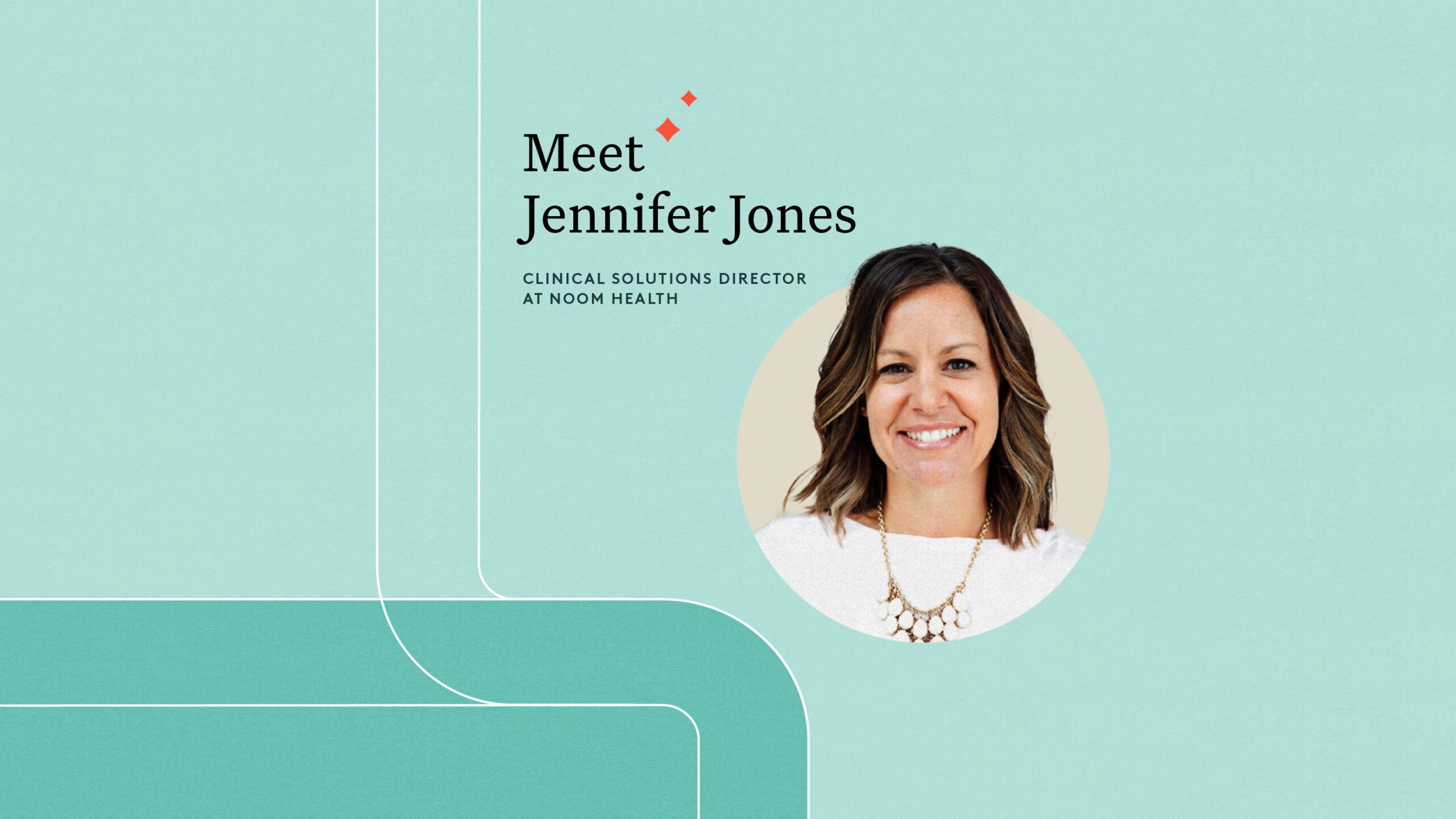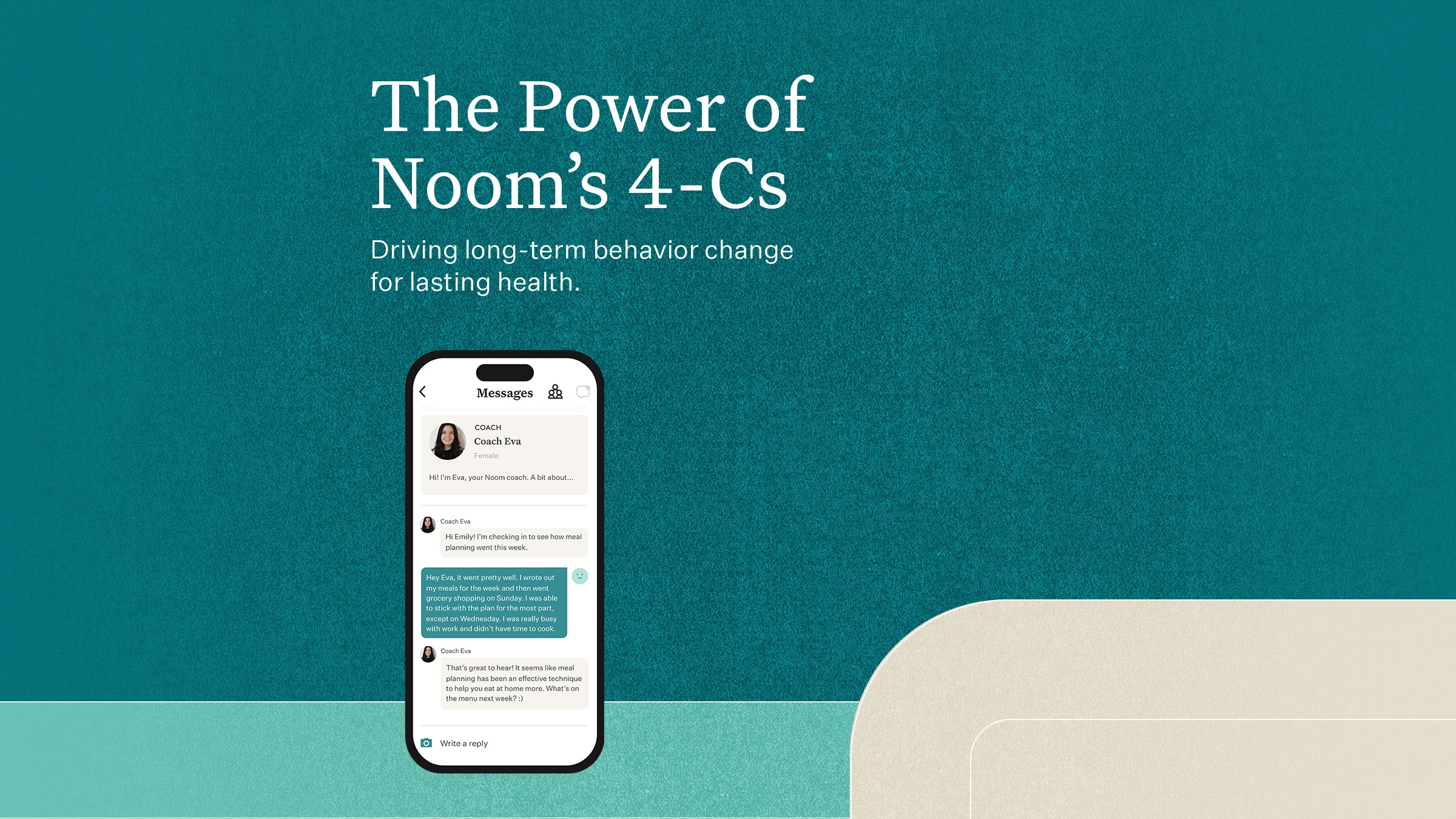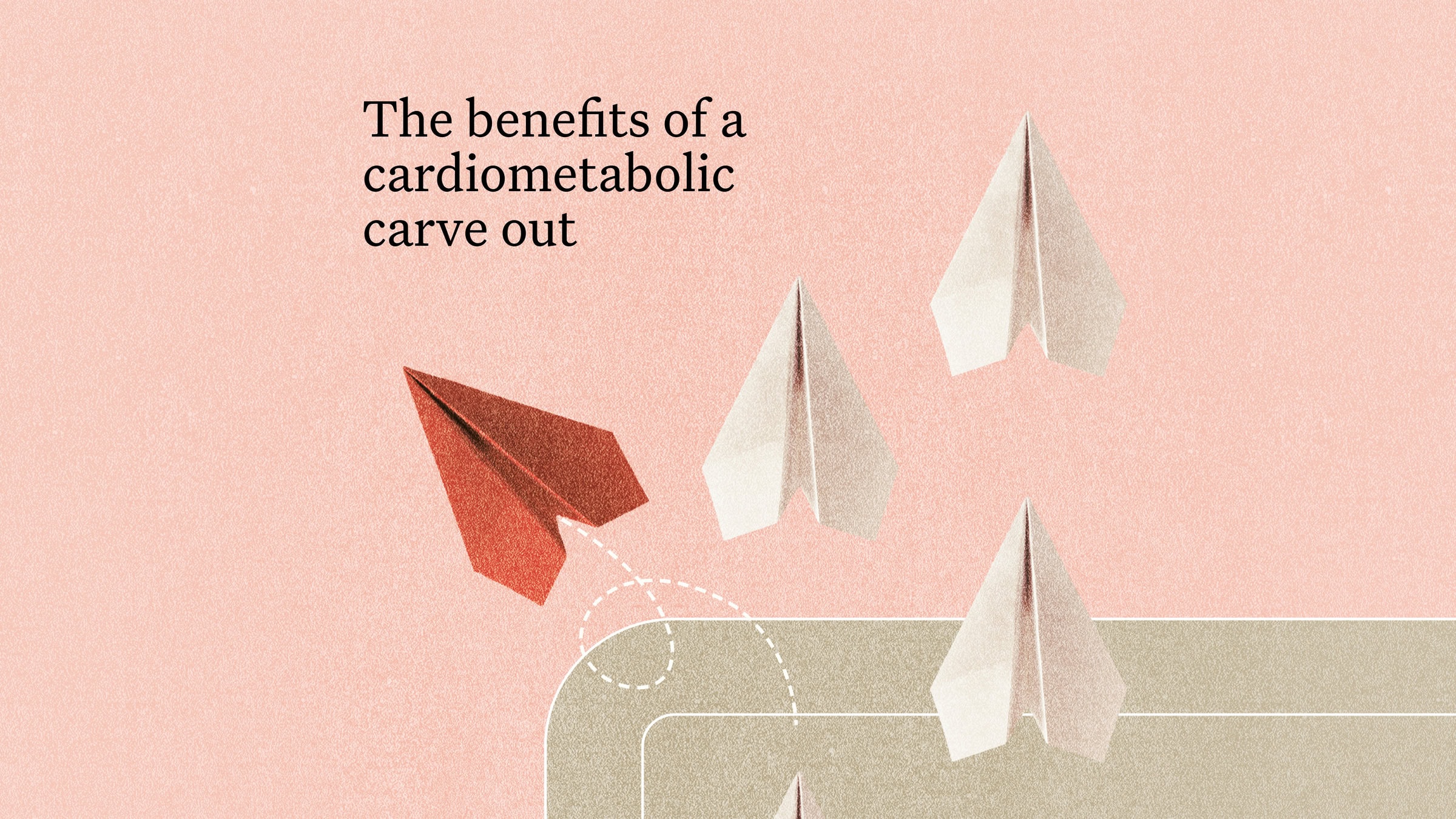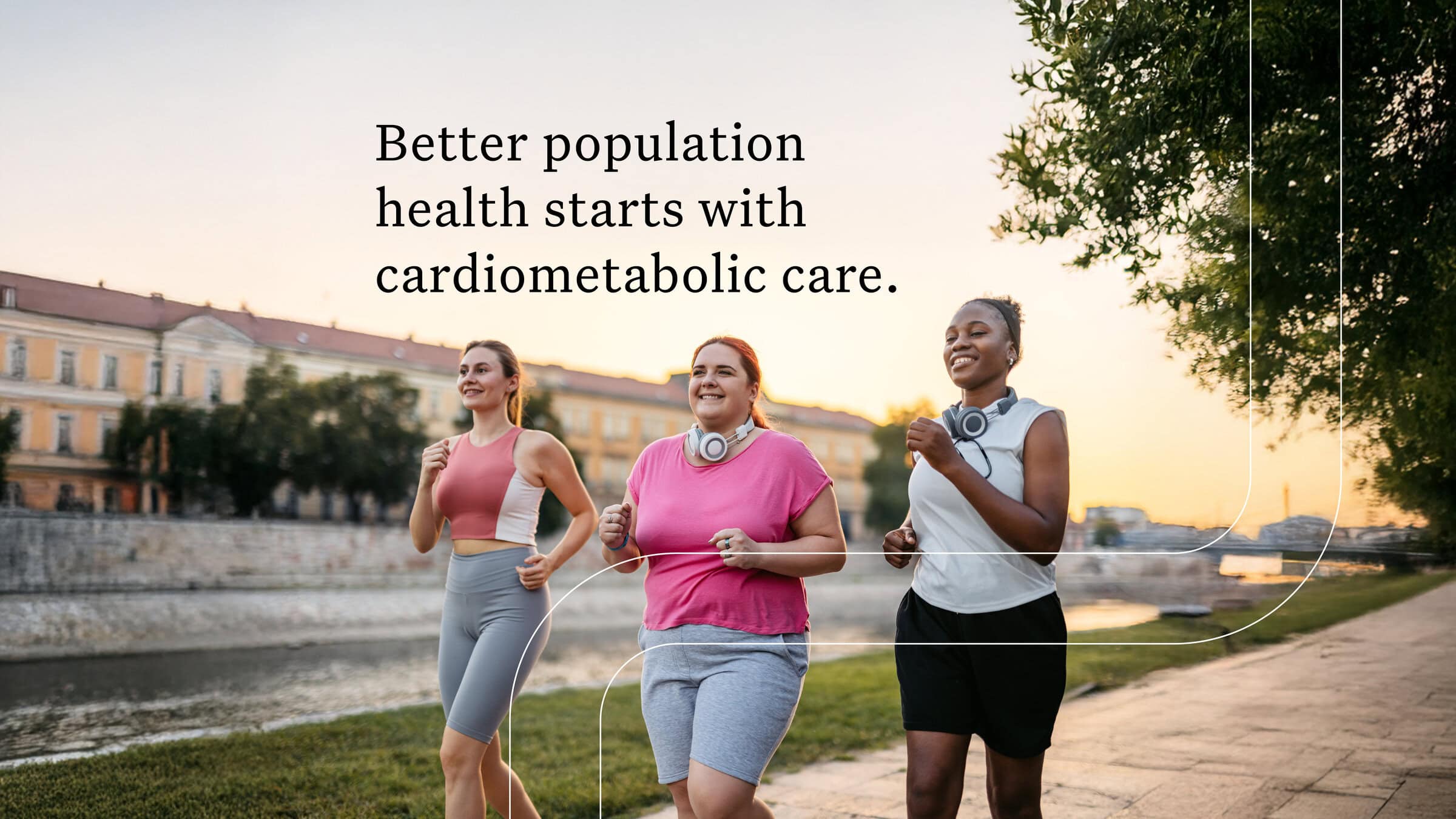Meet the Noom Clinical Team: Jennifer Jones, Clinical Solutions Director
- Blog
- Noom Health
- August 19
Summary
Jennifer Jones, MSM RD CSOWM, is the Clinical Solutions Director at Noom Health, and has worked for over two decades as a healthcare professional with experience in population health, data analytics, human resources and training, and clinical dietetics. Her passion for health and evidence-based behavior change, data-driven insights, and real human connection led her to join Noom, where she supports teams with alignment on client needs and clinical programs. Learn more about her background, perspective on driving long-lasting health outcomes, and what it will take to better support total population health.

In her role as Clinical Solutions Director at Noom Health, Jennifer Jones, MSM RD CSOWM, supports teams with alignment on client needs and clinical programs. With over 20 years’ experience as a healthcare professional with a background in clinical dietetics, wellness programming, and employer health, Jones brings a unique perspective to her role. We asked Jones about her experience, what it will take to build a healthier future, and how payers can lead the change.
1. What has been your professional experience before joining Noom Health?
Before joining Noom Health, I’d spent my career in population health, data analytics, human resources and training, and clinical dietetics. Immediately after completing my dietetic internship, I worked for several years in inpatient and outpatient settings and quickly became aware that it was not my passion, nor did it align with my practice of personalized nutrition. I stepped away from clinical practice and the field of nutrition for several years and worked in HR and training before wanting to return to health and wellness. At the time, population health and data analytics were booming in the Indianapolis area and I started working with a health and welfare benefits broker who was just starting their population health and data analytics. This afforded me great experience and opportunity to learn more about healthcare insurance and data. I ended up working in healthcare data and analytics for about 10 years. When the opportunity to join Noom Health presented itself, I knew I had to take it — not only for my passion for nutrition and healthy living but because of my own personal history and challenges with weight loss and weight maintenance.
2. Why did you join Noom Health?
I joined Noom Health because it represents the intersection of everything I’m passionate about in health — evidence-based behavior change, data-driven insights, and real human connection. Throughout my career, I’ve seen firsthand that lasting health outcomes don’t come from isolated interventions — they come from empowering people to change their daily behaviors in sustainable ways. Noom takes that philosophy and operationalizes it at scale, reaching millions of people with tools that are personalized, accessible, and grounded in psychology.
As a dietitian, I’m also personally drawn to Noom’s approach to nutrition and the flexibility it provides users with the color coding system as well as the incorporation of AI tools to enhance and make food logging easier for individuals.
3. In your expert opinion, why does behavior change play such a key role in driving lasting health outcomes?
In my opinion, behavior change is the cornerstone of lasting health outcomes because it addresses the root causes of chronic conditions — weight management in particular, not just the symptoms. Sustainable improvements in health require individuals to consistently make different choices — what they eat, how they move, how they manage stress — and that can’t be achieved through education alone. True behavior change involves motivation, support, accountability, and often a shift in mindset. When we create the right environment and tools to support those shifts, we empower people to build habits that lead to meaningful, long-term results — well beyond what any one-time intervention can deliver.
4. What do you feel plays the biggest role in building a healthier future?
It really starts with rethinking how we approach health — shifting from reactive care to proactive, preventive strategies. In my view, the biggest driver is collaboration to develop true holistic care: aligning healthcare providers, employers, communities, and individuals around shared goals. We need to break down silos and focus on whole-person health, which means integrating physical, mental, and social well-being. Technology and data give us incredible insight, but it’s the human-centered application of those tools — through coaching, behavior change support, and equitable access — that truly moves the needle. When we empower people with the right resources, support systems, and environments, we lay the groundwork for a healthier, more resilient future.
In addition, we often underplay the impact our environment has on our overall health — this is one area I feel could play a major role as we think about building a healthier future. This includes everything from the chemicals in our food and beauty products as well as water and air pollutants.
5. What are the biggest opportunities payers have right now to better support total population health?
In my view, the biggest opportunities payers have right now to better support total population health revolve around integration, personalization, and prevention.
1. Data-driven personalization at scale
Payers have access to vast amounts of health data — yet we still struggle to turn that data into truly actionable, personalized interventions. There’s a major opportunity to leverage predictive analytics and engagement tools to meet people where they are, proactively identify risk, and deliver the right support at the right time. That could mean targeted behavior change programs or whole-person care navigation.
2. Health equity as a population health imperative
Payers are uniquely positioned to address structural barriers to health — through benefit design, community partnerships, and value-based models that prioritize equity. This is a chance to shift from “closing gaps” to proactively building access, trust, and cultural alignment across diverse populations.
3. Employer collaboration
Employers remain key stakeholders in health outcomes. There’s room for payers to be more strategic partners — offering consultative support, localized insights, and integrated solutions that align with business goals and employee needs.
4. Whole-person support across life stages
Payers can take a more lifespan-oriented approach by connecting physical, mental, and social health through coordinated benefits, care management, and digital tools — especially during transitions like perimenopause, aging, or post-acute recovery.
Bring Noom to
your organization
Give your workforce a preview of what’s possible
for their physical and mental health.



